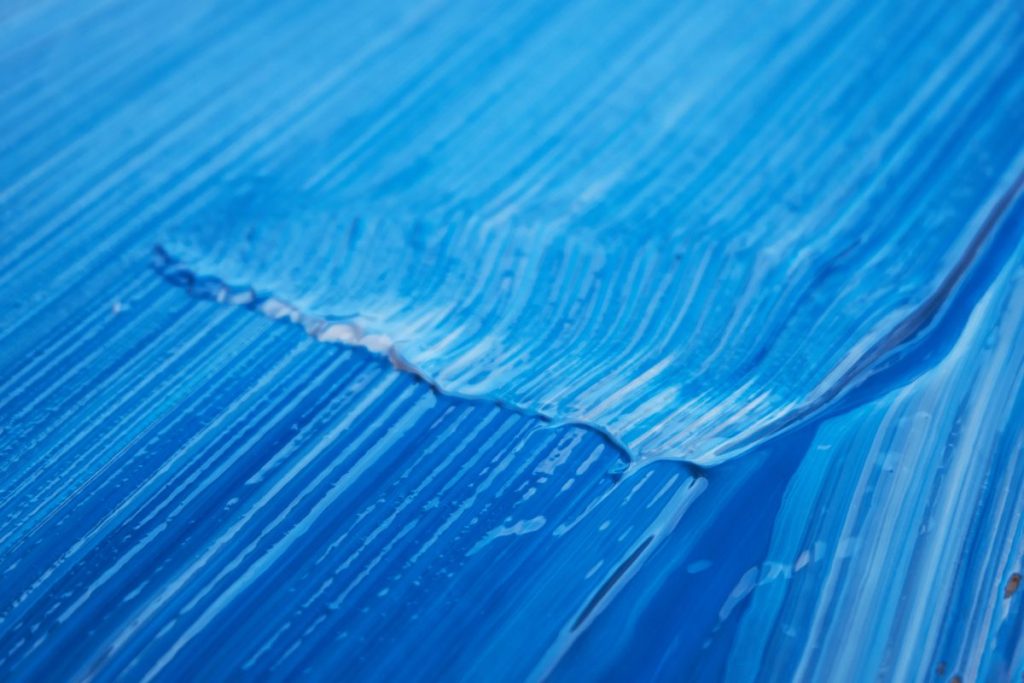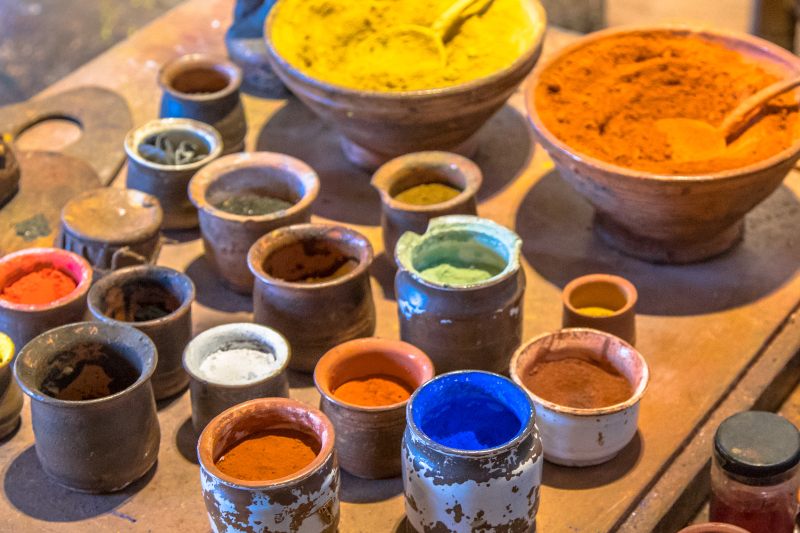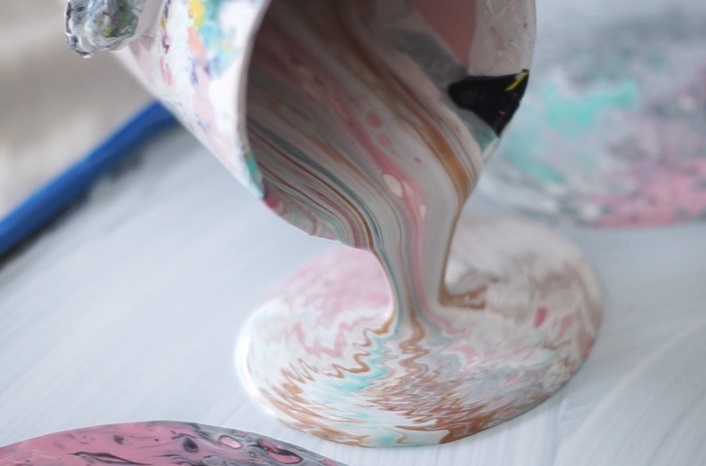Are Acrylic Paints Toxic? What You (and Your Children) Need To Know
We absolutely love to use paint, its coloring is bright and bold making it great for use at home, work or school!

However, naturally we can become concerned by questions such as;
- Are acrylic paints toxic and harming me?
- Can acrylic paints cause cancer?
- Am I breathing in toxic fumes when I use paints?
- Can kids use acrylic paints?
SIMPLE ANSWER:
There are some harmful ingredients in paint and you are right to have concerns.
[TS_Poll id=”1″]
Many acrylic paint brands have been made to be non-toxic for general art use only. But, that doesn’t mean it’s safe to ingest, breathe in, have a lot of exposure to or to get it on your skin or eyes.
Many water based student acrylic paints do not have large amounts of hazardous ingredients in them, however, they DO have some hazardous ingredients in them. They aren’t natural, they are synthetic, essentially a glue like substance.
You should use acrylic paint in a well ventilated space and with protective gear on. More on this below.
We will also go over the hazardous ingredients potentially in paint in this article. [1] [2]

With any product you are using, you must read the label to understand the toxicity and safe ways to use your art products.
You can also find Material Safety Data sheets online for art products, or request them from your supplier if it is unavailable. These sheets go in depth about the product and risks associated.
The good news is that overtime with strong awareness, art materials have improved in safety a great deal.
Many art acrylic paint brands are certified as non-toxic. Look for “AP-Certified Non-Toxic” or “Certified Non-Toxic”, on the label [3].

Table of Contents:
- So, What’s in Paint?
- Short and Long term potential issues
- The Facts on Ingredients
- Safety precautions
- Is Acrylic Paint Harmful to The Environment?
- Conclusion
1. So, What’s in Paint?
The 4 Key Ingredients:
- Pigment (Color)
- Resin Binder (Holds it together)
- Water Solvent (Dilutes)
- Additives (E.G. Ammonia, Preservative, Thickener) [3]
Resin binder is essentially a glue-like substance which begins as a liquid, and dries hard. Products like this give off harmful fumes including volatile organic compounds, in high concentrations, especially when wet and drying.
Many pigments today are synthesised (created unnaturally) rather than being found naturally.

The toxic chemicals commonly used in paint which can be harmful include Alkylphenol ethoxylates (APEs), Biocides, Isothiazolinones, Volatile Organic Compounds, Cadmium, Cobalt, Manganese, Chromium, Lead, Other heavy metals, Formaldehyde, Ammonia and Titanium Dioxide. [4][5]
Exposure to some of the hazardous ingredients used in acrylic paint can have adverse health effects if safety precautions are not taken.
2. Short & Long Term Potential Issues
Short term potential issues
- The fumes can be an irritant to the eyes, nose and throat.
- People may experience, headaches, dizziness, nausea or trouble breathing
- If paint gets on a person’s skin it can cause irritation
- If swallowed it can be harmful.
Long term potential issues
- Nervous system damage
- Organ damage
- Studies suggest that some organic compounds found in paints and pigments are possibly carcinogenic
- Some exposure to toxic substances can also have an effect on our endocrine system, blocking our normal hormone production
If someone is often exposed to large quantities of acrylic paint, it can be beneficial to use protective gear (vapour mask is recommended) and paint in a space with plenty of air flow.

3. The Facts on Ingredients
Here are the facts on different ingredients which are often in acrylic paints today.
Serious caution should be taken to avoid breathing in or ingesting:
- Chemical vapours in acrylic paint
- Sanded paint particles
- Airbrushed paint
- Acrylic paint wet or dry

Here’s a list of potentially harmful ingredients present in some paints:
VOLATILE ORGANIC COMPOUNDS (VOCs)
VOCs are chemicals which let off harmful gases and are sometimes found in paint which include, formaldehyde, toluene, xylene, benzene and acetone. [6]
These chemicals commonly enter the body through inhalation. They can have a negative effect on the human body. Long term exposure can have affect the bodies kidneys, liver and central nervous system.
CADMIUM
Cadmium is a rich yellow colour which is often used in yellow acrylic paint. Handling products with cadmium is usually harmless.
Generally, it cannot enter your body through your skin.
However, inhaling dust particles of cadmium can trigger respiratory tract and kidney problems which can be serious. If it is ingested in a significant amount, poisoning will occur and can lead to potential organ damage. [7]
COBALT
While cobalt can be good for human health in small quantities, in large quantities adverse side effects include asthma and pneumonia.
This can occur by breathing it in or swallowing the substance. [8]

MANGANESE
Small concentrations can also be good for human health however, large concentrations of the substance inhaled can lead to lung irritation and in serious cases bronchitis or pneumonia. [9]
CHROMIUM
Health side effects include irritation of the nose and breathing issues. Allergies can be developed to the product. [10]
LEAD
Lead in paint has been banned in the United States for a number of years. High levels of exposure to lead can lead to lead poisoning. [11]
TITANIUM DIOXIDE
Is naturally occuring, and has been used in paint, cosmetics, sunscreen and toothpaste for decades. While it is considered as low toxicity it can be both safe and unsafe, just depends on how it is being used.
According to the International Agency for Research on Cancer, when inhaling this chemical, it is classified as an IARC Group 2B carcinogen, meaning it is possibly carcinogenic to humans.
Please note like so many compounds, unfortunately research is inadequate in this area. There is a level of uncertainty on this products safety.

4. Safety Precautions to follow:
- Reduce your exposure by making your work environment safe and wearing appropriate gear
- Pack away paint safely and put out of reach
- Increase airflow in your art space through open windows and doors, or be situated in an outdoor space. Alternatively consider a mechanical ventilator.
- Consider wearing a particle mask to protect yourself from fumes.
- Wear gloves and other protective gear when handling paint.
- Ensure your children do not play with paint unsupervised and store paint safely.
- If you get paint on your skin, wash immediately.
- Talk to your doctor about concerns and pay attention if you are experiencing allergies or other reactions
- Be aware of what acrylic paint and other products you have and what they contain, so you know how to safely store, use and dispose of the materials.
- Seek non-toxic paints when purchasing.
- Check the label and material safety data sheet always!
- If you have concerns, immediately seek medical advice.
5. Is Acrylic Paint Harmful For The Environment?
Yes, unfortunately. As it is synthetic, it isn’t biodegradable. Acrylic paint can become microplastics in waterways.
When you wash acrylic paint off your paint brushes and your hands down the drain, the environment can also be affected.
The substances do not dissolve and are washed down the drain and into our oceans. Make a change by disposing of these substances in an environmentally friendly way. (Rubbing a wet kitchen towel over unused paint and placing it in general waste).

6. Conclusion
With a bit of background information on what is in acrylic paints, you are better informed and can make your own decisions.
Acrylic paint is loved for its vibrance, ease of use and quick drying properties. It is used widely across the world. We can only try our best to use it mindfully and take care of our health and earth.
Don’t stop creating! But do think about your health when you are using products.
You can protect yourself with protective equipment. Or try to find the least harmful options when purchasing paint at the store.
Unfortunately in today’s society, acrylic paint is just one synthetic product we use daily. Have you researched what is in deodorants, shampoos, cleaning products, processed foods etc? There’s a lot of heavy metals, chemical preservatives, thickening agents and such being used in many household products.
What’s your thoughts on this? Do you have any advice? Leave it in the comments below!









I just painted my studio with valspar acrylic paint and had a headache and felt a little unwell for a couple days. I’m not certain it was the paint but it seems that way. I wasn’t even aware of VOCs until now.
The gallon of paint has VOC<150 g/L written on the side. I'm guessing that's around 600 grams per can.
Luckily the room I'm painting has lots of windows but without a breeze on a hot day there isn't much circulation. I'm not looking forward to applying my 2nd coat.